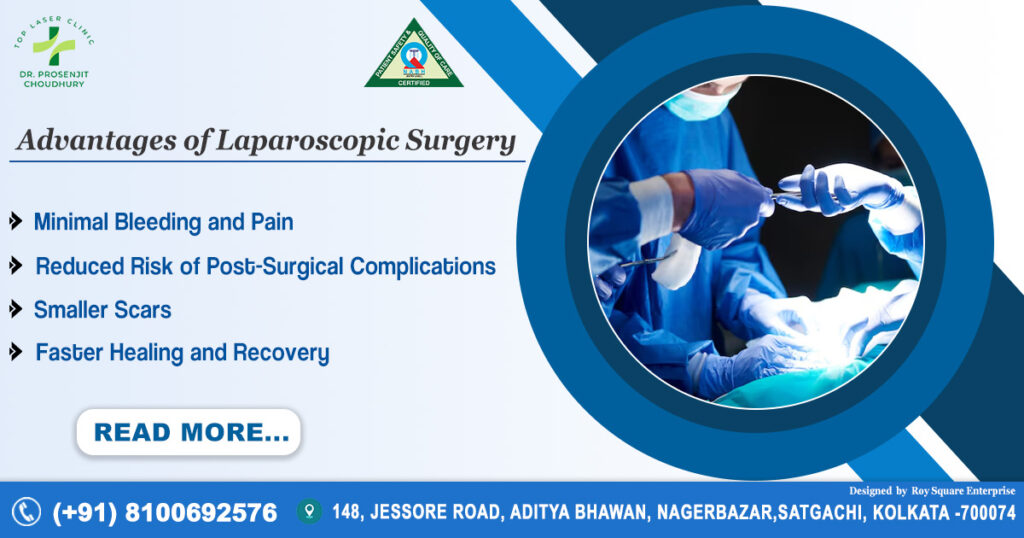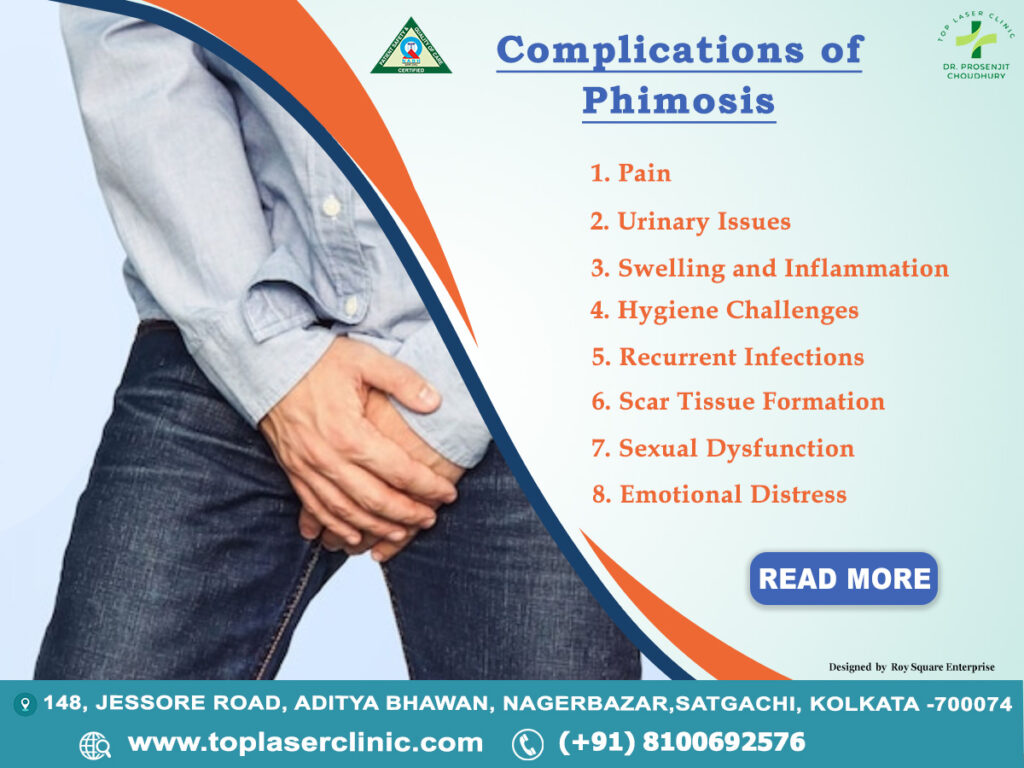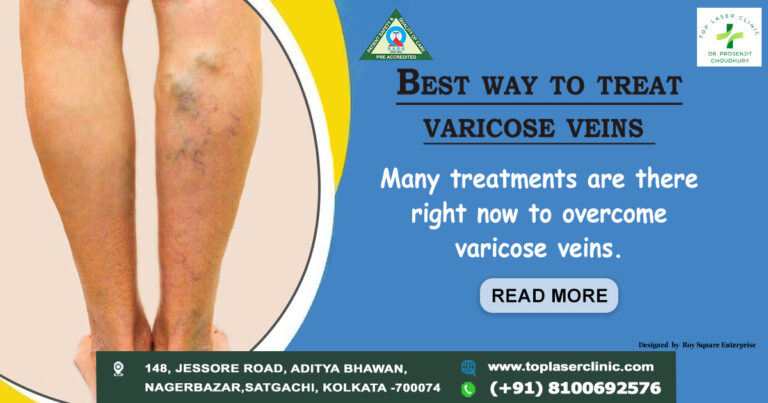Table of Contents
Laparoscopic surgery is a minimally invasive and safer alternative to traditional surgical methods. A laparoscope is a long thin tube and has a camera with light at its tip. This innovative tool enables surgeons to visualize internal organs and structures without requiring large incisions. This technique has become increasingly popular due to advancements in technology, allowing for a wide range of surgical procedures to be performed.
Types of Laparoscopic Surgery
Due to its numerous benefits, laparoscopic surgery has become the preferred choice for many doctors. Here are some of the most common laparoscopic surgeries:
1. Laparoscopic Cholecystectomy: Removal of the gallbladder is the motif of this surgery.
2. Laparoscopic Hysterectomy: Removal of the whole uterus.
3. Laparoscopic Appendectomy: Removal of the appendix.
4. Laparoscopic Myomectomy: It’s a surgery to remove uterine fibroids.
5. Laparoscopic Surgery for Infertility: Treatment for infertility issues like ovarian cysts.
6. Laparoscopic Sleeve Gastrectomy: Weight loss surgery that removes a part of your stomach.
7. Endometriosis Laparoscopic Surgery: Treatment for endometriosis.
8. Laparoscopic Hernia Surgery: Repair of hernias is also possible with laparoscopic surgery.
These minimally invasive procedures offer faster recovery, reduced scarring, and fewer complications compared to traditional open surgeries.
Laparoscopic Surgeries Procedures
Laparoscopic surgery utilizes a set of modern instruments, primarily the laparoscope, a slender device equipped with a tiny camera and light. The surgeon initiates the operation by making small incisions, typically only a few millimeters in length, and inserts the laparoscope and other necessary instruments through these openings. The camera provides a clear visual of the organs on the video screen, which helps the surgeon to perform the procedure. Additionally, carbon dioxide is used to inflate the abdomen, expanding the abdominal walls and giving the surgeon a clear view of internal structures and sufficient space to operate. After operation, the gas is expelled and the incisions are closed with stitches.
Advantages of Laparoscopic Surgery
Laparoscopic surgery offers numerous advantages over traditional open surgery. Some of the key benefits include:

1. Minimal Bleeding and Pain: Smaller incisions result in less bleeding and pain during and after surgery, reducing the need for blood transfusions and pain medication.
2. Reduced Risk of Post-Surgical Complications: Laparoscopic surgery minimizes the risk of post-surgical bleeding, pain, and infection. Unlike the traditional methods, it is much safer.
3. Smaller Scars: This surgery doesn’t require a large surgical wound. Smaller incisions result in less noticeable scars and reduced risk of herniation.
4. Faster Healing and Recovery: Patients can expect faster healing, quicker discharge (often the same day or the next day) and a faster return to normal activities.
Risks of Laparoscopic Surgery
While this surgery offers many benefits, it also carries some risks and challenges. The surgeon’s range of motion is limited by the small incisions. The surgeon may struggle to feel the tissue, making it challenging to judge the necessary force. This surgery requires specialized training and can be difficult to learn. Other risks of this surgery include:
1. Infection: As with any surgical procedure, there is a risk of infection.
2. Allergic Reactions: Patients may be allergic to certain medications or materials used during the procedure.
3. Organ Damage: The surgeon may accidentally damage surrounding organs or tissues.
4. Adhesions: Internal adhesions may form after the procedure.
5. Blood Clots: Patients may be at risk of developing blood clots.
6. Internal Bleeding: There is a risk of internal bleeding during or after the procedure.
7. Damage to Internal Structures: The surgeon may accidentally damage internal structures.
Laparoscopic Surgery Cost
The cost of laparoscopic surgery depends on various factors.

1. Type of Procedure: Different procedures have different costs.
2. Surgeon’s Fee: The surgeon’s fee contributes to the overall cost.
3. Severity of the Patient’s Condition: More complex cases may require additional charges which increases the cost.
4. Location: Location can impact the cost. Treatment in urban areas is more expensive than in rural areas.
Understanding these factors can help someone to get a better estimation of the costs associated with laparoscopic surgery.
Checklist Before Choosing a Hospital or Clinic
Before deciding on a hospital or clinic for your treatment, consider the following factors:
1. Accreditation and Certification: Ensure the hospital or clinic is accredited by a reputable organization.
2. Facilities and Equipment: Check if the hospital or clinic has modern facilities and equipment.
3. Doctor’s Qualifications and Experience: the doctor’s qualifications, experience, and success rate.
4. Staff and Nursing Care: Evaluate the quality of nursing care and staff responsiveness.
5. Patient Reviews: Read patient reviews for your satisfaction.
6. Cost and Insurance: Clarify payment options and insurance coverage.
7. Hygiene and Safety: Check if hospital’s or clinic’s hygiene and safety standards.
Best Laparoscopic Surgeon in Kolkata
Finding an efficient surgeon is crucial in this kind of surgery. If you are searching for a trustworthy laparoscopic surgeon in Kolkata then DR. Prosenjit Choudhury is an efficient surgeon in this area. He is the best laparoscopic surgeon in Kolkata. He will guide you with all the techniques and it’s pros or cons.
FAQ: Frequently Asked Questions
- What is laparoscopic surgery?
Answer: Laparoscopic surgery is a minimally invasive surgical procedure using a laparoscope (thin tube with camera and light) to visualize internal organs.
- What are the benefits of laparoscopic surgery?
Answer: Reduced scarring, less pain, less bleeding, shorter hospital stay and faster recovery are the benefits of laparoscopic surgery.
- What happens during laparoscopic surgery?
Answer: In a laparoscopic surgery the surgeon makes small incisions, inserts the laparoscope, and then performs the surgical procedure using modern equipment.
- What are the risks and complications of laparoscopic surgery?
Answer: Bleeding, infection, adhesions, and injury to surrounding organs or tissues are the risk factors of laparoscopic surgery.
- How much pain can I expect after laparoscopic surgery?
Answer: You may experience mild to moderate pain after laparoscopic surgery.
- Are laparoscopic surgeries better than traditional open surgery methods?
Answer: Because of the advancement of laparoscopic surgery it has become a safer surgical option than traditional open surgery.




























